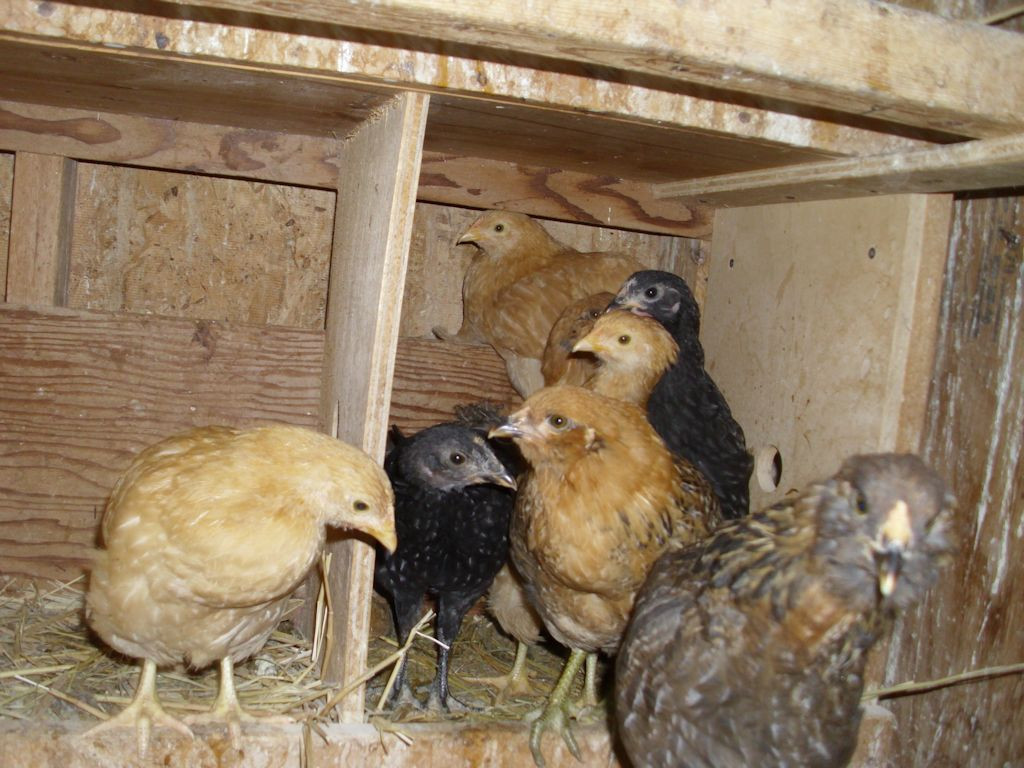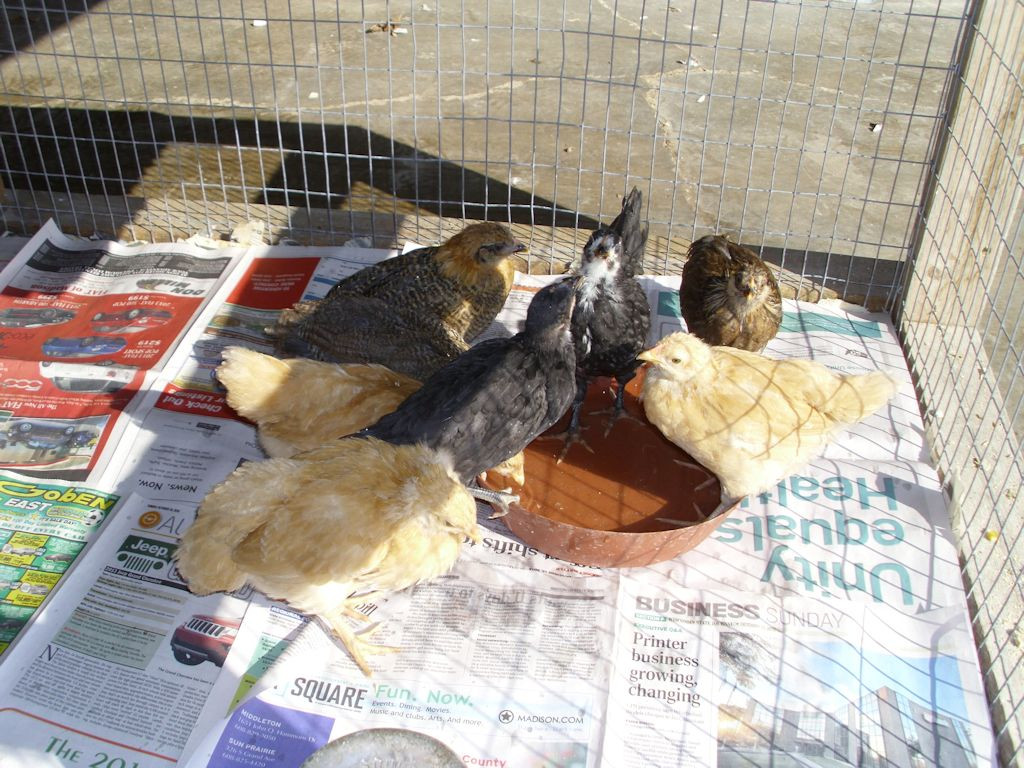If you’ve been keeping up with this series of posts, you know from A Chick Update (Part 6) that the chickens are now in the coop with the older hens and that the hens are doing everything possible to teach them how to be better chickens. A funny thing started happening this past week. The chicks are starting to recognize that the hens sit in a certain manner in the nest box. Of course, like children everywhere, the chicks have decided to emulate the behavior. So, they get up into the nest box, fluff out their feathers, and proceed to sit with the greatest of care. Unfortunately, all of them are sitting in the same nest box for the most part, which was amusing enough when they were smaller, but is absolutely hysterical now because one or two of the chicks usually end up falling out. The chicks will eventually get the idea.

Today is a sort of graduation day for the chicks as well. As of tomorrow, the chicks will have spent two weeks with the hens in the coop. Not only are the hens getting a bit irritable, but the chicks need to start growing beyond the coop as well. As of tomorrow, the chicks will have the opportunity to go out into the run and get some sunshine, along with a little freedom from the hens. However, I can’t just let them crawl out under the run fence as the hens have been doing for the last while (just so you know, chickens are excellent at tunneling under fences), so I’ve cleared all the brush and made sure that the fence will keep the chicks inside—at least for now. The hens can still get out by flying over the top of the fence. That was my original idea anyway to keep predators at bay.
I’m sure the chicks will be absolutely terrified when I open the run door. Once they get past the usual surprise though, they’ll go outside and run about. They still peep, but it’s not hard to hear them yelling, “I’m free! I’m free!” or the equivalent in chicken anyway.
Trying to get them back into the coop will be interesting. The last time I had chicks, getting them back into the coop consisted of chasing them back up the ramp at the end of the day. Nothing would prompt the chicks to go back inside. The hens may try to help me out, which would be nice. I’ve noticed that they herd the chicks about in the coop. If not, I’ll be out there again with my fishing net to catch any chicks that won’t go into the coop no matter how nicely I ask. After about two weeks, the chicks will get the idea that when I call from inside the coop, it really is time to come in for the day. Everything takes time.
As the chicks continue to grow, they’ll also gain more knowledge of what it means to be a chicken. It’s interesting to think about chickens going to a school of sorts, but that’s how things end up working out. Let me know your thoughts about all things chicken at [email protected].







